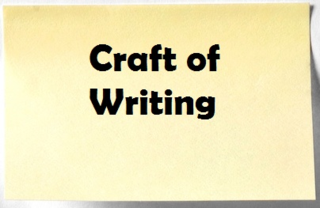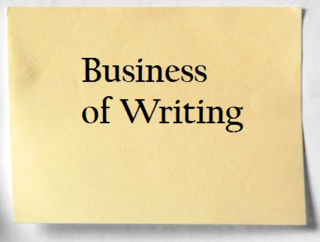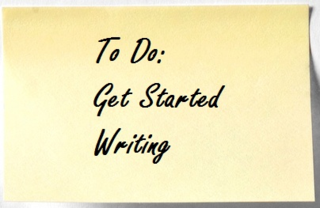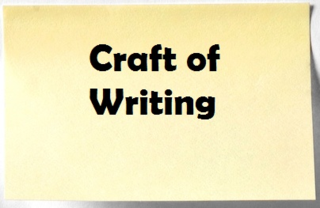Rob Bignell's Blog, page 346
January 23, 2014
Editing client releases self-help book
A recent  editing client of mine, Pittsburgh attorney Sherman Toppin, has released his first book, “Finishing on Top: How to Achieve Personal Goals, Become Successful, and Experience Happiness through the Power of Finishing”. The book shows how to use the power of finishing to accomplish the things we dream about. It’s available online in paperback, ebook, or audio book.
editing client of mine, Pittsburgh attorney Sherman Toppin, has released his first book, “Finishing on Top: How to Achieve Personal Goals, Become Successful, and Experience Happiness through the Power of Finishing”. The book shows how to use the power of finishing to accomplish the things we dream about. It’s available online in paperback, ebook, or audio book.
Need an editor? Having your book, business document or academic paper proofread or edited before submitting it can prove invaluable. In an economic climate where you face heavy competition, your writing needs a second eye to give you the edge. I can provide that second eye.
Amazon.com WidgetsRelated articles
 Editing client publishes first fantasy novel
Editing client publishes first fantasy novel Editing client publishes near-future novel
Editing client publishes near-future novel Editing client releases baseball novel
Editing client releases baseball novel Editing client publishes new short story collection
Editing client publishes new short story collection Five Great Quotations about the Power of Writing
Five Great Quotations about the Power of Writing
January 22, 2014
Heart of the matter: Core vs. corps
A whole  group of writers seem to misunderstand the significant difference between these two similar-sounding words.
group of writers seem to misunderstand the significant difference between these two similar-sounding words.
A core is the central or most important part of something: The puppet government was corrupt to its core.
A corps, however, is a division of military personnel, usually those who have a specialized function: The Marine Corps landed on the beaches shortly before dawn.
A good way to remember this is that corps, because of its s, look like it’s plural, hence a group, while core has no s and so looks like it’s singular, hence a lone, single axis at the center of a larger thing.
Need an editor? Having your book, business document or academic paper proofread or edited before submitting it can prove invaluable. In an economic climate where you face heavy competition, your writing needs a second eye to give you the edge. I can provide that second eye.
Amazon.com Widgets
Related articles
 Use broad conflict to set your story in motion
Use broad conflict to set your story in motion Editing client publishes first fantasy novel
Editing client publishes first fantasy novel
January 21, 2014
Why you should avoid being sensational
The art  critic who reviewed the latest exhibit sure was clueless. Perhaps he isn’t an art critic at all but made the wrong turn on his way to covering his news story. Hey buddy, the mud wrestling was a left turn at 23rd Street.
critic who reviewed the latest exhibit sure was clueless. Perhaps he isn’t an art critic at all but made the wrong turn on his way to covering his news story. Hey buddy, the mud wrestling was a left turn at 23rd Street.
Did that sound a little over the top? That’s because it employed sensationalism in an effort to keep your attention. Sensationalism essentially is overhyping…marketing pros might use it to sell you a product, journalists and novelists might use it to get you to read a story, politicians might use it to influence you opinion.
Writers ought to avoid being sensational, however. Sensational writing simply isn’t fair to your readers, who expect you to be fair and truthful. Indeed, once readers catch on to what you’re doing, your technique actually undercuts confidence in your writing and recommendations. In any case, as writers we have a broader moral obligation to do what is best for society. While your ideas may be controversial, drawing attention to them by misrepresenting them and yourself doesn’t improve society; indeed, your writing can cause harm (and that opens you to lawsuits).
Generally, you are being sensational when the following occurs in your writing:
g Appeals solely to emotions – There’s nothing wrong with asking someone to be empathetic. But when you primarily rely on fear or insults rather than reason to sway people’s opinions (as often occurs in political campaigns), the real issues and potential solutions for them are obscured.
g Intentionally aims to be controversial – Generally, if you exaggerate, misrepresent or make up facts and events, you can turn the most benign action into something that appears reckless or malicious. If that doesn’t work, the writer simply may omit key facts and leave out information.
g Aims to be loud and self-centered – Rather than actually make a relevant point about a controversial issue, your writing instead is full of exclamation points, so it’s more of a show rather than discussion. Cable news commentators often are guilty of this.
If you must sensationalize your writing so it doesn’t sound dull, then you probably need to learn more about the craft of writing or at least come up with a new topic. Craftsmanship involves paying precise attention to details, not hiding the flaws with a coat of garish paint.
Need an editor? Having your book, business document or academic paper proofread or edited before submitting it can prove invaluable. In an economic climate where you face heavy competition, your writing needs a second eye to give you the edge. I can provide that second eye.
Related articles
 Motivate yourself to write this year!
Motivate yourself to write this year! Select right word to avoid reader confusion
Select right word to avoid reader confusion Stay inbounds when writing descriptively
Stay inbounds when writing descriptively Five Great Quotations about Editing
Five Great Quotations about EditingJanuary 20, 2014
Develop conflicts related to resolving your story's central problem
As developing  a story, your main character must face conflicts as attempting to resolve the central problem that set the story in motion. These conflicts, however, must always relate to that central problem. Such conflicts are called complications.
a story, your main character must face conflicts as attempting to resolve the central problem that set the story in motion. These conflicts, however, must always relate to that central problem. Such conflicts are called complications.
For example, suppose the central problem of your story is that a sheriff in the Old West must track down a bank robber. Any complication in the story would be a conflict that hinders the sheriff’s ability to catch the bank robber: he loses their trail; his horse throws a shoe that slows his chase; he must enter a canyon in which he could be ambushed. Unrelated conflicts, such as wishing the pretty young teacher in town wouldn’t marry the general store’s owner might be interesting, but at best that will just be a subplot unless it can be connected to catching the bank robber.
Each new complication also needs to create a more dire situation for our main. This does not necessarily mean that each new conflict is more dangerous than those that came before. Instead, with each new complication, the prospect of resolving the central problem becomes more unlikely or will require some great sacrifice on the part of the main character.
Complications need not just be external conflicts but also can be internal. For example, the sheriff might doubt his own abilities, perhaps because he didn’t catch a bank robber when serving as a sheriff back East, and the deep sense of failure is what led him to head out West. A horse throwing a shoe is certainly a problem, but one the sheriff easily can overcome with time; he just needs to make it to a blacksmith or a local farmer who knows how to shoe a horse. The sheriff’s uncertainty about what to do next, however, can lead him into more difficult troubles…for example, once he picks up the trail again, he might doubt his discovery and set off in the wrong direction.
As developing complications in a story, always ask what is the character's driving motivation for solving the story's central problem then have the antagonist play off this by foiling the main character in some way related to his motivation. For example, in an espionage tale, our protagonist spy’s motivation for solving the central problem of stopping a terrorist from exploding a dirty bomb might be loyalty to/love of country. Have the terrorist plant information that suggests the spy’s own government is behind the dirty bomb plot. Now the main character must unravel the truth (and wonder if his loyalty is misplaced) – all while the terrorist continues unhindered in hatching his dastardly scheme.
Need an editor? Having your book, business document or academic paper proofread or edited before submitting it can prove invaluable. In an economic climate where you face heavy competition, your writing needs a second eye to give you the edge. I can provide that second eye.
Amazon.com Widgets
Related articles
 Use broad conflict to set your story in motion
Use broad conflict to set your story in motion Create meaningful settings in your story
Create meaningful settings in your story Constructing your story's main character
Constructing your story's main character When should you start a new novel chapter?
When should you start a new novel chapter?
January 19, 2014
Five Great Quotations about Editors
“[Editors] drive  us nuts. We go from near-worshipful groveling when we submit to bitter cursing when they reject us.” – Ken Rand
us nuts. We go from near-worshipful groveling when we submit to bitter cursing when they reject us.” – Ken Rand
“Editor: A person employed...whose business it is to separate the wheat from the chaff, and to see that the chaff is printed.” – Elbert Hubbard
“The road to ignorance is paved with good editors.” – George Bernard Shaw
“Editors also know that the people who are really readers want to read. They hunger to read. They will forgive a vast number of clumsinesses and scamped work of every sort if the author will delight them just enough to keep them able to continue.” – William Sloane
“Never throw up on an editor.” – Ellen Datlow
Need an editor? Having your book, business document or academic paper proofread or edited before submitting it can prove invaluable. In an economic climate where you face heavy competition, your writing needs a second eye to give you the edge. I can provide that second eye.
January 18, 2014
Don’t let perfectionism strangle your creativity
Ever hit a  moment of frustration when you just can’t seem to make a line or a passage right? The result is a brain freeze. You keep working at the line, though, only to suffer through the penning of seemingly even worse lines or passages.
moment of frustration when you just can’t seem to make a line or a passage right? The result is a brain freeze. You keep working at the line, though, only to suffer through the penning of seemingly even worse lines or passages.
The problem likely is that you are overly judgmental of your own work. To a degree, that is a good thing, as it means you hold your writing to a high standard, and the result is you then produce above average pieces.
If you produce at all, of course…
Taken to an extreme, perfectionism can lead you to never finish a task through constant rewriting, procrastination, or not even writing at all.
Fortunately, there are a lot of ways you overcome perfectionistic tendencies when writing:
g Focus on improving – Writers typically get better with time, so think of your initial writing efforts as the warm-up or the first quarter in a game; it's those writings when you hit your stride during the two-minute warning or on the winning drive at game's end that will be your best work. In short, acknowledge that not all of your writing will be published, but if you keep at it, some of it will rise to the status of being publishable.
g Give yourself permission to write a first draft – Acknowledge that the first time a line is written, it won't be perfect. Sure, sometimes it is, and that's what inspired you to write a short story, novel, self-help book, or whatever in the first place. But a few of the lines that follow will be less than perfect, and that’s okay. Simply accept that you will revise your manuscript a few times.
g Recognize that your writing is better than you think – Sometimes you just need to get words and ideas on paper and then walk away from them. When you come back to the writing in a week or a month, you probably will be delightfully surprised at how good it actually was, and you’ll likely have a more objective perspective that allows you to quickly resolve problem lines or passages.
g Establish artificial deadlines – Philosophically speaking, some believe a piece of art is never finished, and writers/musicians/painters, etc. often do want to revise their works. There would be no novels/songs/paintings, etc. if those creating such pieces didn't just stop and release their work to the world. You don’t want to revise forever. You can set a deadline of when you will finish a work…and you probably will be surprised by how much your writing actually impresses others!
Need an editor? Having your book, business document or academic paper proofread or edited before submitting it can prove invaluable. In an economic climate where you face heavy competition, your writing needs a second eye to give you the edge. I can provide that second eye.
Amazon.com WidgetsRelated articles
 Five Great Quotations about Why We Must Write
Five Great Quotations about Why We Must Write Five Great Quotations about Editing
Five Great Quotations about Editing
January 17, 2014
Marketing Tip: Offer a Discount Price
When self-publishing,  you typically can change the price of your books at will, and with social media such as Twitter, Facebook, LinkedIn, your blog, and more, you can quickly spread the word about your sale to thousands of people.
you typically can change the price of your books at will, and with social media such as Twitter, Facebook, LinkedIn, your blog, and more, you can quickly spread the word about your sale to thousands of people.
The idea of a discount is to undercut your competitor’s prices, so make sure your sales price actually does that. In addition, you may want to time your discount to a period when others would be interested in purchasing your book…a book about ghosts works well in October, a romance book in the weeks before February, a travel guidebook in spring before the summer vacation season starts.
You might even consider offering your book for free. That’s a good idea if you have other books to sell or if your book is intended to sell people on purchasing your services or other products. The reader will view your free book as a bargain, and hopefully they’ll be impressed enough by your writing to buy your other books or to purchase your services/products. Of course, you must include information about your other books/services/products in the book you offer for free; be sure to include links in your ebook to a site where they can be ordered.
Need an editor? Having your book, business document or academic paper proofread or edited before submitting it can prove invaluable. In an economic climate where you face heavy competition, your writing needs a second eye to give you the edge. I can provide that second eye.
Amazon.com Widgets
Related articles
 Fourth writing guidebook hits store shelves
Fourth writing guidebook hits store shelves Second 'Hittin' the trail' guidebook released
Second 'Hittin' the trail' guidebook released Editor publishes third 'Hittin' the Trail' guidebook
Editor publishes third 'Hittin' the Trail' guidebook Create book sell sheet for pitching book
Create book sell sheet for pitching book Tips to ensure a successful book reading/signing
Tips to ensure a successful book reading/signing
January 16, 2014
Will you take advantage of ebook’s opportunity for innovative storytelling, content presentation?
All too often,  writers see ebooks as an afterthought to their paper book, as an “Oh yeah, some people prefer digital books, so to maximize sales, I better sell my book on Kindle or Nook, too.” While that attitude may be fine for books published prior to the widespread use of ereaders, such flippancy fails to acknowledge potentially innovative new ways of storytelling or presenting information.
writers see ebooks as an afterthought to their paper book, as an “Oh yeah, some people prefer digital books, so to maximize sales, I better sell my book on Kindle or Nook, too.” While that attitude may be fine for books published prior to the widespread use of ereaders, such flippancy fails to acknowledge potentially innovative new ways of storytelling or presenting information.
In short, readers acquire information differently from ebooks than they do from paper books; in fact, ebooks are as different from paper books as television is from radio. Just as the first television programs merely were radio programs shown live, so today’s ebooks are just paper books presented on a computer screen – but that likely will change in the years ahead.
Indeed, we’re only beginning to develop the ebook’s true potential for storytelling and information presentation. I don’t propose to know what those new innovations might be any more than the recording engineer who developed a system for multiple track recordings knew what songs the Beatles might create in the studio once they got hold of the equipment. I’m not even the recording engineer who developed the equipment. But just looking at the basic differences between the old and the new equipment – whether it be music studio electronics in the 1960s or ereaders in the 2010s – clearly shows that great opportunities for innovation exist.
Among those basic differences between ebooks and paper books are:
g Page numbers – Ebooks don’t use them. In response, many writers create a table of contents that allow readers to go directly to the chapter’s beginning in the text, but that’s just a nod to the way paper books are constructed. Rather than rely on the traditional table of contents and index, how can the lack of page numbers truly change the way readers navigate an ebook?
g Content – The small screen, limited typography, and excessive “page turning” to the next screen encourages shorter, article-like pieces. How does this affect the way authors can structure and and present information in ebooks?
g Interactivity – Ebooks can connect to other ebooks, website pages, or pages within the ebook. This means the ebook’s content is not limited to the text and illustrations that make up the “core” text. How does this affect the way readers use ebooks to find content and thus the way authors will present that content?
g Price – Ebooks invariably can be less expensive because they do not have the overhead costs of paper and ink for printing, warehousing and transportation for distribution, and labor costs involved in these and paper book sales. How does the lower price affect the amount of information a writer might include in a book? Will the lower price dissuade writers from being innovative, as there is a likely low return on investment for the labor put into creating a highly interactive book?
Noting some ebook limitations also is of value, here. Of course, if writing fiction, the basic elements of a good story remain the same despite the format it’s presented in: on stage, scroll, folio, bound volume (or novel), radio, television, ebook. But each platform itself offers certain advantages over the others, and so stories that best match that platform thrive in it. Hence, James Joyce works great in a novel, but his stories would have to be radically restructured to work on stage or radio; and as so many readers have discovered, a great motion picture isn’t necessarily a great novel. Another limitation is that ebooks are horrible as picture books and poetry anthologies because the small screens result in cut-off or small photos and bad line breaks. This is something software engineers may need to address.
Still, despite these limitations, writers have the opportunity to create innovative new stories and nonfiction texts. Just as writers took advantage of Gutenberg’s printing press centuries ago – indeed, the novel didn’t exist before that time nor was reading widely learned in part because the dearth of books made the skill of reading “irrelevant” – perhaps you will be one of those innovators and create a name for yourself in history.
Need an editor? Having your book, business document or academic paper proofread or edited before submitting it can prove invaluable. In an economic climate where you face heavy competition, your writing needs a second eye to give you the edge. I can provide that second eye.
Amazon.com WidgetsRelated articles
 How to format line spacing for an ebook
How to format line spacing for an ebook
January 15, 2014
Making sense of parentheses and periods
Punctuation rules  are complicated enough. But what happens when you stick two punctuation marks next to one another – like parentheses and periods?
are complicated enough. But what happens when you stick two punctuation marks next to one another – like parentheses and periods?
Don’t panic – chaos need not ensure.
The last parentheses goes in front of the end mark for the sentence it belongs to:
Please find January’s report attached (see January Report).
If the words within the parentheses forms a complete sentence, capitalize the first word and use an end mark before the last parentheses. An additional end mark still is needed at the end of the main sentence that the parentheses supports:
Please find January’s report attached (It is called January Report.).
Please find January’s report attached (It is called January Report.) as you requested.
Thank you for remaining calm, and may now go about your business.
Need an editor? Having your book, business document or academic paper proofread or edited before submitting it can prove invaluable. In an economic climate where you face heavy competition, your writing needs a second eye to give you the edge. I can provide that second eye.
Related articles
 Breaking the barrier: Hurdle vs. hurtle
Breaking the barrier: Hurdle vs. hurtle Mastering the fine art of dialogue punctuation
Mastering the fine art of dialogue punctuation Place commas inside quotation marks
Place commas inside quotation marks Improve your writing by dumping fuzzy words
Improve your writing by dumping fuzzy words How do you know when your book is done?
How do you know when your book is done?
January 14, 2014
Don’t be guilty of polysyllabism (Huh?)
Ever read  a sentence in a story and wonder why the author couldn’t just use plain English?
a sentence in a story and wonder why the author couldn’t just use plain English?
The author is guilty of polysyllabism, or using a long word for effect even though a shorter word is better. For example, the first sentence of this entry would have been written as: Ever read a sentence in a story and excogitate why the author couldn’t just use plain English?
Excogitate, meaning to ponder seriously, is an example of polysyllabism.
Of course, the word “polysyllabism,” meaning “a world with three or more syllables” is a play on the whole concept.
The problem with using too long of a word is that it’s not in many readers’ vocabularies. They’ll miss the meaning of the sentence or will have to reread the sentence to figure out what you meant. In fact, using polysyllabism largely is the author showing off or handwaving (“See, I’m smart! I know big words!”).
There is a time to use polysyllabism, though, and it’s usually for humor. This often is done to great effect in science fiction, when characters such as genius scientists, ultrasmart aliens (like Mr. Spock) or machines (like the android Data) use large words. For the jokes to work, though, usually the reader must know what the character is referring to – so the words, while large, aren’t necessarily obscure.
Need an editor? Having your book, business document or academic paper proofread or edited before submitting it can prove invaluable. In an economic climate where you face heavy competition, your writing needs a second eye to give you the edge. I can provide that second eye.
Amazon.com WidgetsRelated articles
 Shun beautiful writing done for beauty's sake
Shun beautiful writing done for beauty's sake Select right word to avoid reader confusion
Select right word to avoid reader confusion


